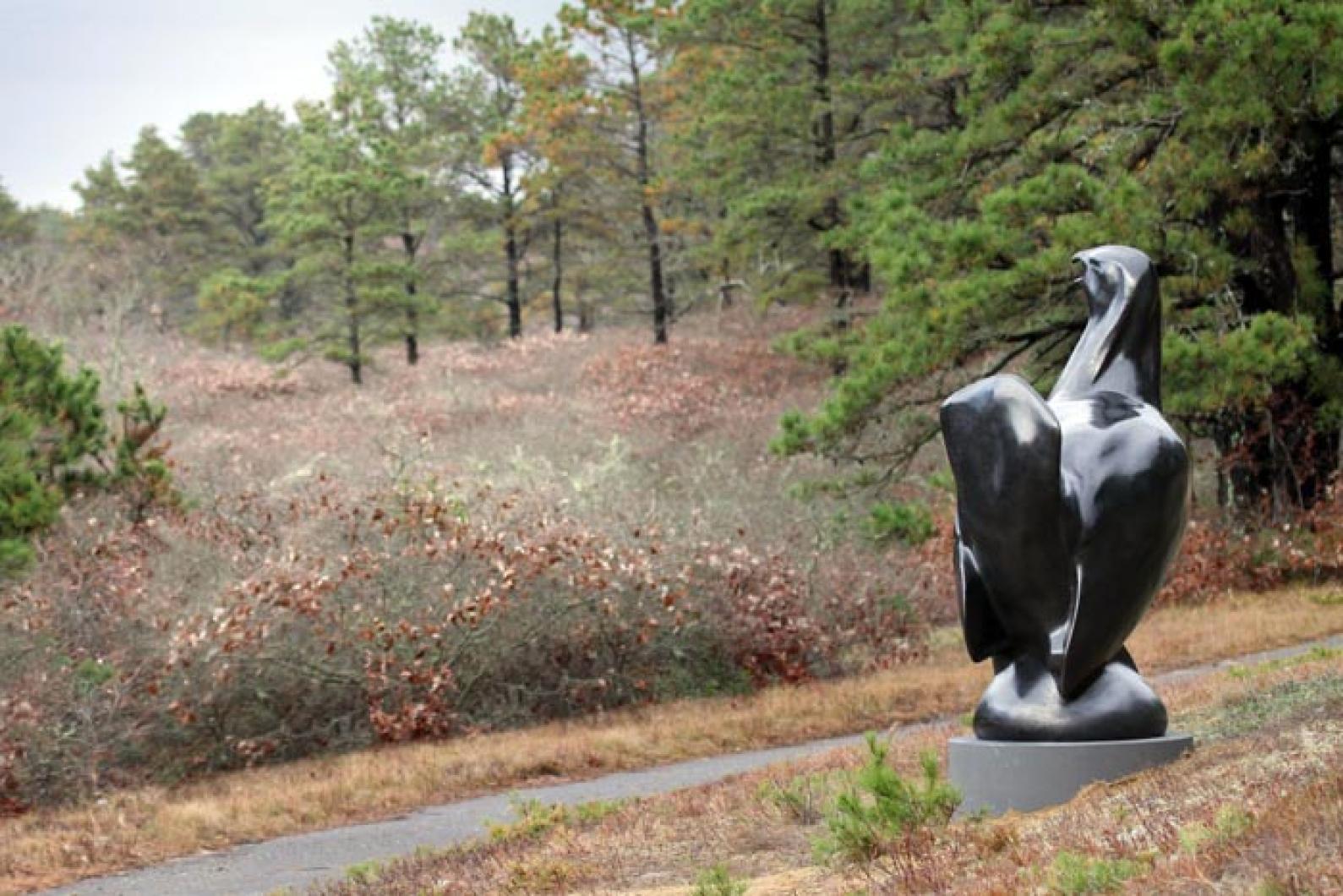“Forgetting is another kind of extinction.”
Todd McGrain, artist, advocate and film maker, never wants us to forget the species that we have lost. His film, The Lost Bird Project, which screens this weekend at the Martha’s Vineyard Film Festival, memorializes five birds that are gone forever.
Closest to our collective Vineyard hearts is the heath hen, whose loss unequivocally changed the Island. An editorial in the April 21, 1933 edition of the Vineyard Gazette reporting on the death of the last bird of its kind concurred: “And so it is that the extinction of the heath hen has taken away part of the magic of the Vineyard. There is a void in the April dawn, there is expectancy unanswered, a tryst not kept. Not until the great plain has grown again, a forest of tall pines and cedars, such as that which wooded the level acres a few centuries ago, will the loss of the heath hen be forgotten.”
Even now, with the ‘forest of tall pines and cedars grown,’ we will continue to remember the heath hen. The bird may be gone, but the heath hen is with us in spirit and in sculpture. Todd McGrain’s memorial to this bird is a large bronze heath hen that will forever inhabit the bird’s last known location.
The Manuel Correllus State Forest was originally created in 1908 as the Heath Hen Reserve, after the mainland populations of these birds were long gone and the Island their only refuge. Purchased for $2,420, the establishment of this sanctuary was one of the early efforts to save a species in decline. Wardens were hired to protect the world’s last population, maintain their habitat, and dispatch predators.
People were the most obvious and dangerous predator. Heath hens were a popular game species for sport and for food. Some believe that the first Thanksgiving bird was not a turkey, but a heath hen. This bird was served so often that servants would negotiate with their employers how often they would eat a meal of heath hen. No more than three times a week would be acceptable.
Other predators were also hard on the population. Abandoned and feral cats were a menace, as were hawks that soared above the great plain of the reserve. Fire was another serious threat. During the breeding season, a fire could race through the forest, killing these birds and their chicks. Wardens recall the dedication of the female heath hen that would not leave her nest and eggs even as the fire roared through.
The population of heath hen in the reserve fluctuated greatly. Before a particularly devastating fire, there were more than 2,000 birds! By 1927 there were only a dozen left.
We all know the ending of the heath hen story. Booming Ben, the last known bird, uttered his final mating call in 1933 and was never heard from again. Green’s Field, now part of the state forest, was the site of his last stand. Heath hens were known for their elaborate mating ritual that included a dawn gathering, strutting and dancing, puffing up their orange throat sacs, and booming loudly in the morning light.
These are sounds and sights which we will never behold again. Watch, remember, and care, for this will not be the earth’s last loss.
It is not often that we humans get to touch something eternal; but we are in touch with something that is: as the Gazette said in its eulogy to Booming Ben, “We are looking upon the uttermost finality which can be written, glimpsing the darkness which will not know another ray of light. We are in touch with the reality of extinction.”
Suzan Bellincampi is director of the Felix Neck Wildlife Sanctuary in Edgartown.





Comments
Comment policy »